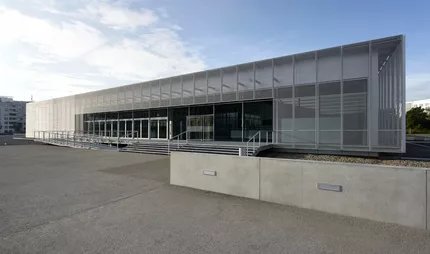
Mauermuseum - Museum Haus am Checkpoint Charlie (Wall Museum)
Objects of escape
Since 1962, the Mauermuseum - Haus am Checkpoint Charlie has been telling the stories of people fleeing from East Germany and the history of the Berlin Wall.
Checkpoint Charlie is an iconic symbol of the division of Germany. In 1961, as East Germany is building a wall, you find American tanks stationed here. At the same time, resistance fighter Rainer Hildebrandt is building the Mauermuseum. Its mission: to catalogue escape plans as well as support escape attempts. Now the Mauermuseum is known for its extensive collection of items from 30 years of history, such as cars and hot air balloons that tell the stories of how successful escapees did it.
Haus am Checkpoint Charlie - travel back in time to a divided Berlin
Overnight in 1961, the East German authorities start building a wall through Berlin. For the next 30 years, it's not just the dividing line between capitalism and communism, but also between families. Stretching for over 155 km and equipped with watchtowers, the Wall seals off West Berlin. Refugees from the East start to arrive in West Berlin, and Rainer Hildebrandt starts to record their stories, starting the museum in his flat in 1962. A year later, the museum relocates to a building immediately adjacent to Checkpoint Charlie. Hildebrandt's museum soon becomes a focal point for escapees, helpers, journalists and protesters. Helpers provide the Checkpoint Charlie house with vehicles, tools and personal mementos. Innovative and full of information - this is the impression you get from the Mauermuseum - Haus am Checkpoint Charlie today. Take a look through the inventive methods people have used to escape from the GDR, such as a concealed luggage compartment in a VW car, a mini-submarine, a hot air balloon and a collapsed suitcase. Some of these methods actually work, and you can see how at the museum. The museum is also a gallery where international artists like Hannah Höch and Bulatow exhibit their works. Permanent displays look beyond Berlin and Germany with titles such as From Gandhi to Walesa, NATO Mission for Freedom and Raoul Wallenberg Lives.
Highlights of the exhibition
- Escape car with boot compartment.
- Original pieces of the wall.
- Fake and genuine travel documents.
- Scale model of a wall section.
- Suitcases prepared for escape attempts.
More GDR related museums
Only a few steps from the Mauermuseum at Checkpoint Charlie is the Trabi museum, right in the former border area, which is open for tours showing everyday life in the GDR. Find out more about East German car making and its most famous product - the cult Trabant. It is on display in all colours and variations. It's 20 minutes on the underground from Checkpoint Charlie to the DDR Museum. This interactive exhibition showcases everyday life in East Germany. There's a lifelike East German living room, complete with the typical fitted wall furniture. Full of nostalgic everyday objects from the GDR, the museum also features a Stasi listening station to show you what life was really like in communist Berlin.
Our tips for your visit
Take the U6 underground to Kochstraße/Checkpoint Charlie station, just outside the museum entrance. The museum is open on Mondays and holidays and opens late in the evenings. Groups of 25 or more get a discount as do students and children. Children under 7 can visit for free. Berlin WelcomeCard holders get 25% off admission. You will need a 2-euro coin for the lockers, and audio guides are available on site.
School group information
Mauermuseum - Haus am Checkpoint Charlie organises special events and meetings for student groups. These can be booked in advance by email. Internships and workshops may also be possible.
daily 10-20 h


